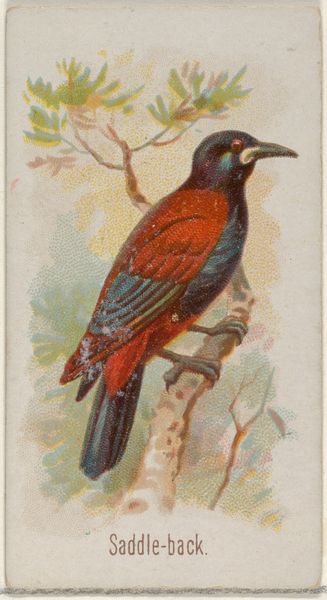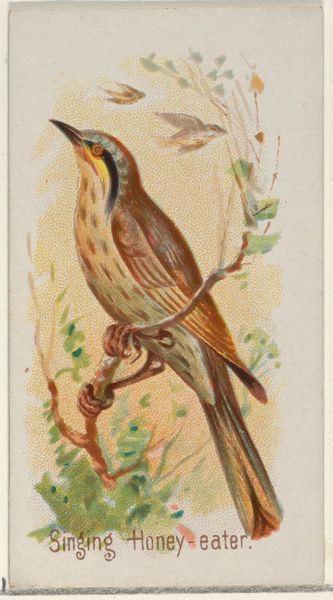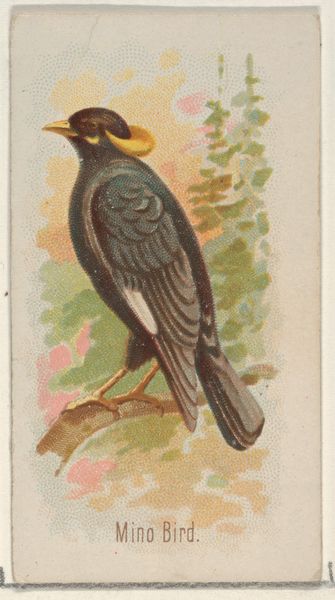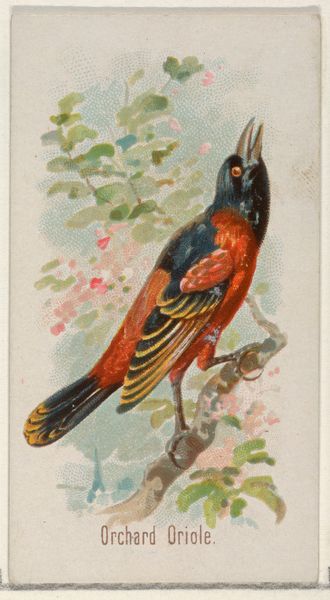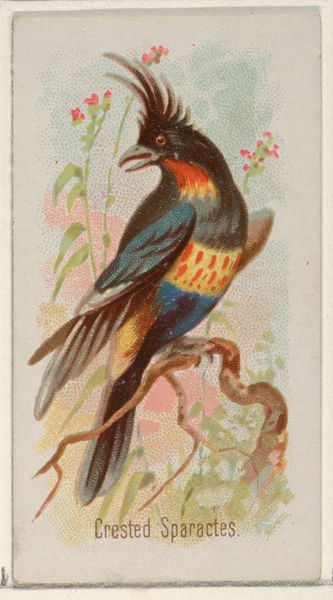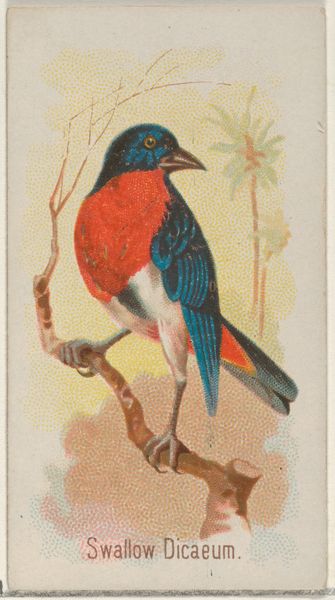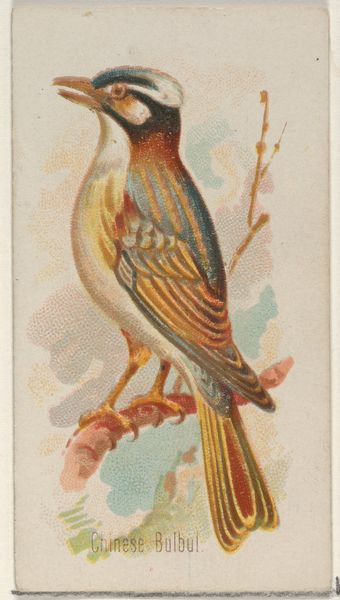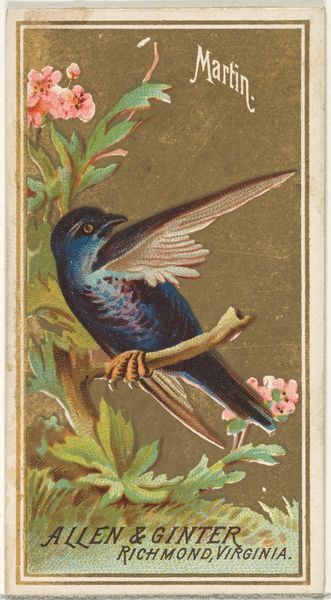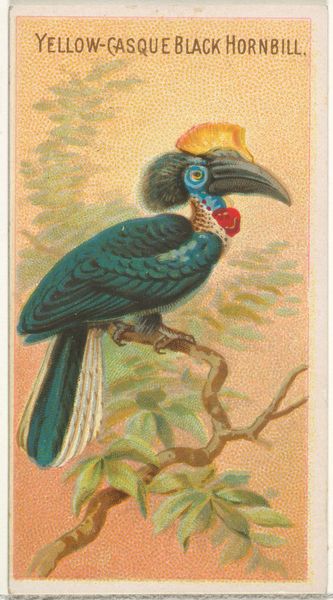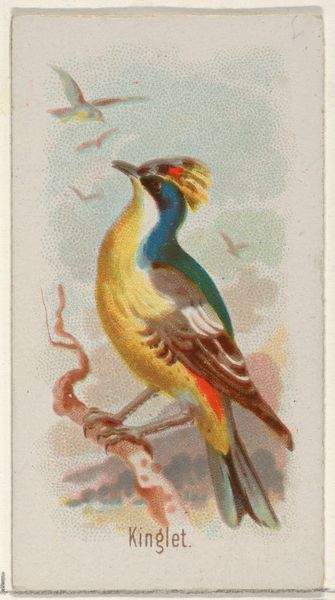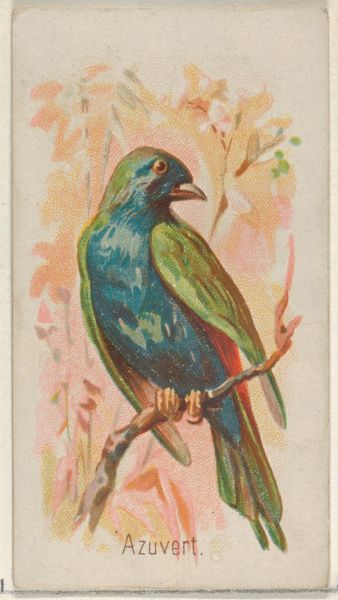
Pastor, from the Song Birds of the World series (N23) for Allen & Ginter Cigarettes 1890
0:00
0:00
drawing, coloured-pencil, print
#
drawing
#
coloured-pencil
#
water colours
# print
#
impressionism
#
bird
#
coloured pencil
Dimensions: Sheet: 2 3/4 x 1 1/2 in. (7 x 3.8 cm)
Copyright: Public Domain
Curator: Let’s have a look at "Pastor," one from the "Song Birds of the World" series (N23), produced around 1890 for Allen & Ginter Cigarettes. These were trading cards included in cigarette packs. It’s a colored-pencil drawing that uses a printmaking process. Editor: The first thing that strikes me is the gentle pastel palette and delicate lines. The overall composition evokes a feeling of tranquility, doesn't it? It seems almost idyllic, despite its very nature as commercial ephemera. Curator: Exactly, the "Song Birds of the World" series offered a touch of natural beauty amid industrialization. It's a fine example of the commodification of nature imagery within the late 19th-century culture of collecting. Allen & Ginter targeted a growing consumer market with these colorful, idealized images. The inclusion of birds can be seen as speaking to notions of freedom and escapism from urban life. Editor: And there's a peculiar choice of bird species and title. Why "Pastor?" Was there something about the bird's song or behavior that evoked religious associations in that era? I can't help but consider how social class and access to leisure shaped perceptions of nature. Perhaps for some consumers, owning such an image stood as a marker of refinement and elevated social standing. Curator: That's a thoughtful point. Ornithology became a widespread pursuit amongst the Victorian middle classes. Having "Pastor" implies certain aspirational values or class association. The card would have circulated within networks influenced by the scientific and colonial dimensions of bird classification itself. These cards helped distribute particular notions of what constitutes "nature." Editor: Considering Allen & Ginter’s history and wealth accumulation during this period, especially their associations with tobacco farming, it is crucial to contemplate the labor conditions under which this wealth was accrued, a process often shrouded in these visually appealing cards. The cost of beautiful aesthetics should not distract from reflecting on these inequities and power dynamics that underline even the most apparently harmless artworks. Curator: A crucial reminder of the larger system these tiny beauties functioned within. Viewing "Pastor" is thus not merely an appreciation of its artistic skill. It is also an invitation to probe our understandings about value, representation, and cultural legacy during an age defined by profound industrial and social transformation. Editor: Precisely, thinking about the conditions surrounding such artworks pushes us to consider their place in perpetuating social narratives or ideologies which have broader impacts.
Comments
No comments
Be the first to comment and join the conversation on the ultimate creative platform.
